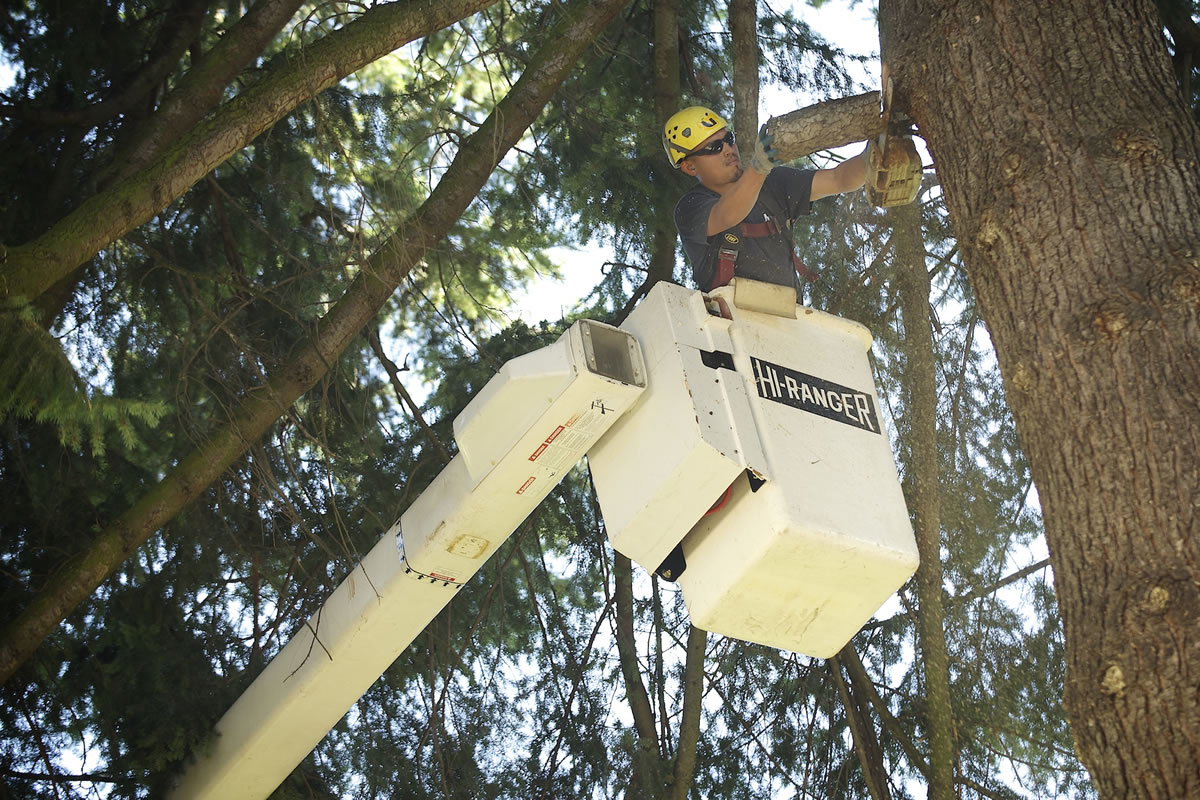More on the Vancouver Barracks online.
The four historic buildings south of Officers Row have been overshadowed for years. Now, the century-old landmarks stand out more prominently along the south side of the Vancouver Barracks Parade Ground.
A local tree service trimmed the lower branches of 15 Douglas fir trees that have fronted the two-story buildings for 70 years or more.
In addition to giving people a better view of the buildings, the pruning project also reduced the number of fir needles that led to overflowing gutters.
That job — lifting the tree canopy — is the most visible result so far of the National Park Service’s recent acquisition of the East and South Barracks.
The staff at the Fort Vancouver National Historic Site has started a caretaking campaign to preserve and protect the structures before they can be restored as historic attractions or transitioned into new roles.
In another caretaking project, work crews have buttoned up the buildings. Doors have been sealed with plywood panels, as have some of the windows. Other windows, facing heavily traveled streets or busy walkways, have been covered with Plexiglas sheets that have a little more eye appeal than plywood.
A lot of the caretaking work is behind the scenes or under the ground. It won’t stand out to the people who stroll through the 33 acres that were transferred to the Fort Vancouver National Historic Site on Memorial Day.
Like most government agencies, the U.S. Army had a backlog of repair and upkeep work at the barracks.
“We have been chasing down deferred maintenance,” said Ray Cozby, project manager for the park service. And “we’ve had to repair some underground water leaks.”
Facilities supervisor Alex Patterson’s staff has been monitoring utility use for each building and have found some excess water, gas and electrical use.
While electrical upgrades and new sewer lines aren’t the sexiest aspects of the national park system, said Chief Ranger Greg Shine, it is crucial in the post-to-park transition. The infrastructure projects will set up the rehabilitation and restoration work that will showcase an era of U.S. Army history.
Archaeologist Doug Wilson, director of the Northwest Cultural Resources Institute, said the National Park Service has documented the architectural and historical significance of the buildings it has acquired.
Some of the road construction and utility trenching also could involve archaeologists. The projects could turn up historical resources that were never mapped, Shine said.
Perhaps workers who were part of a construction project a century ago moved around lots of soil with no thought of its archaeological value, Shine said.
In the spring, work is expected to begin on exteriors of the buildings, including roofs, gutters and siding. Crews also will begin dealing with lead-based paint.
Visitors who patronize two long-established Vancouver barracks businesses eventually will notice temporary changes in traffic patterns and roadway access. The barracks barber shop and the Shoppette — the birthplace of the U.S. military’s post exchange system — will remain open during road construction.
Fort Vancouver officials are taking a phased approach to the project. The caretaking comes first, Cozby said, “then we’ll seek funds from the government and other sources for rehabilitation work.”
A lot of it is beyond their control, Cozby said.
But looking at it optimistically, “in a five-year time frame,” he added, “we hope we would have something significant to show for our efforts.”
Tom Vogt: 360-735-4558; http://www.twitter.com/col_history; tom.vogt@columbian.com.




